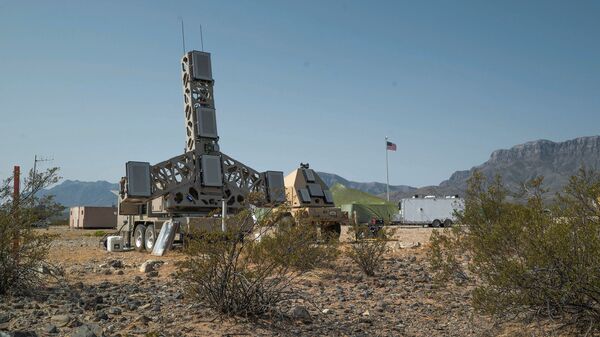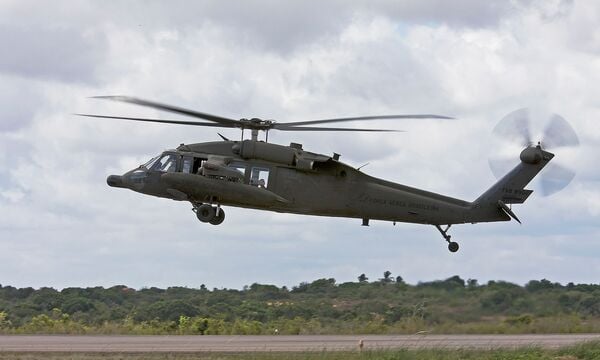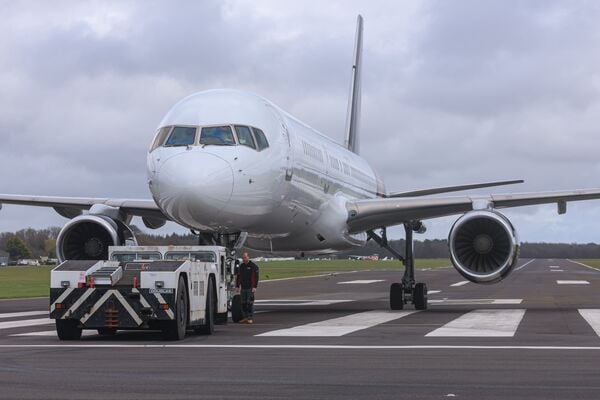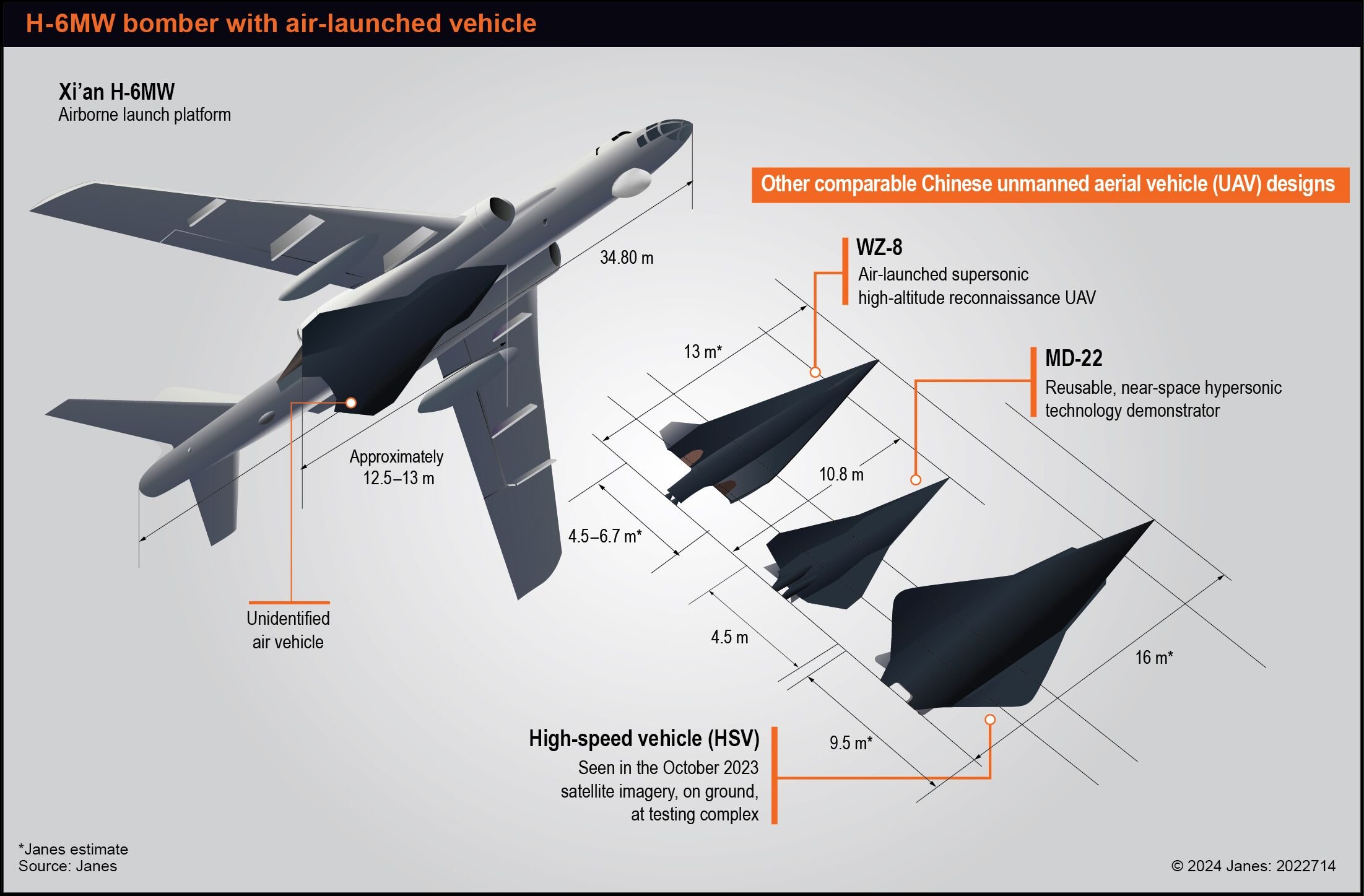- About
- Intara
- Capabilities
- Advisory
- Resources
- News
- Store
USAF seeks 'operational return‘ on ABMS, JADC2 investments
17 February 2022
by Carlo Munoz


A prototype fire-control radar is being used to track threats and pass information to weapons during ABMS tests at White Sands Missile Range in 2020. (US Air Force)
Top US Air Force (USAF) leaders are planning to lock an “operational return” on the service's investments on its Advanced Battle Management System (ABMS) and its portion of the Joint All-Domain Command and Control (JADC2) capability within the next three to five years, said USAF Secretary Frank Kendall.
“There are a lot of good things happening. I have been trying to get [programme officials] pointed more at what I call operational return on investments,” Kendall told Janes. “Some of the things that have been done, I think, move the ball in the right direction, but it‘s not integrated and focused enough in my mind,” he said during a January interview.
ABMS is the air service's effort to develop a mobile ad hoc network (MANET)-driven cloud-based battlefield communications and management network, based on an open architecture model leveraging the Internet of Things (IoT) approach to technology development that is largely used by civilian IT companies. The Pentagon-led JADC2 initiative will enable US commanders to connect any sensor pod or platform to any weapon system, regardless of domain. Although JADC2 is a department-wide joint effort, the technologies developed for the JADC2 concept are designed to dovetail with ABMS.
From the USAF perspective, Kendall said he anticipates “incremental improvement, and I definitely see some improvements [coming] in the next three to five years” writ large on the operationally focused capabilities for ABMS and JADC2.
In fiscal year (FY) 2021 USAF budget officials requested USD435 million for the service's research and development (R&D) accounts “to develop the network, infrastructure, and connectivity” to support its JADC2 and ABMS efforts. “We are working with the CFT [Cross Functional Teams], other departments, and services to ensure our efforts fuse into a holistic framework and support our common and open architecture efforts,” budget officials wrote at the time. However, according to Kendall, the time has come to transition a number of those R&D technology initiatives for ABMS from the laboratory to the field.
“The biggest question mark for me right now is what are the steps in that [process]? At what scale do we try to advance towards that end state to get some return as quickly as we can? So, that‘s really what we are trying to sort out, and I have no doubt that we can field [some of] those capabilities” within the allotted three- to five-year window, the USAF secretary said.
He declined to go into specifics on which ABMS capabilities needed to mature within that three- to five-year window, so that air force leaders achieve their mid-term return on investment. However, Kendall noted that ABMS needed to achieve very high data transfer rates via secure anti-jamming communication platforms with low latency, coupled with advanced, wide area situational awareness platforms co-ordinated through a slew of new battle management architectures. “I want to be on the road to that end state, but I would say that is something more on the order of maybe 10 years out,” Kendall noted.
“It is a combination of better data, better understanding of what is going on out there, and better decision-making about what to do with it. That is really the goal here,” he added.
Securing, streamlining, and accelerating capabilities tied to how the US armed forces leverage collected data streams into advanced networking technologies is the driving factor behind the department‘s overarching JADC2 implementation strategy, issued in June 2021. A key element of the navy effort is the proposed elimination of proprietary network standards, to allow interoperability among the services within the JADC2 construct, Pentagon leaders said at the time.
However, for those disparate, service-led initiatives to operate cohesively under the JADC2 banner, department leaders are training their focus on getting the necessary data into the service-led programmes and platforms that make up the JADC2 capability, via the new strategy.
Apart from data management, USAF leaders contracted mobile satellite and telecommunications company Kymeta in June 2021 to develop ABMS situational awareness and battle management capabilities, leveraging artificial intelligence (AI)-enabled open systems and software design. The deal is as part of the “competitive category for connectivity [development]” for ABMS that will cover “an open architecture family of systems that enables capabilities via multiple integrated platforms”, in support of ABMS and the larger JADC2 concept, company officials said at the time.
Despite the air service's current slate of ABMS technology investments, and USAF leaders setting the three- to five-year window to develop and field operational capabilities, Kendall made it clear that the ultimate ABMS solution would not be as simple as accelerating data transmission to multidomain assets across an area of operation, at near-realtime speed, during a conflict.
“The underlying question is, what decisions can I make that I would be enabled by technology” via ABMS, according to Kendall. “Do I want to allocate targets better? Do I want to position a force better? What information do I need to know about the threat? And then how do I take that information, process it, and make what decisions with it? It is really about focusing in on the speed at which all of that happens at the end of the day,” he added.
However, Kendall made it clear that the service's inherent focus on the mid-term operational goals for ABMS capabilities is driven by the need to deter or defeat combat capabilities fielded by China, Russia, and other near-peer competitors.
“When you think about the types of [capabilities] we‘re trying to deter, and if necessary, prevail in, they tend to be things like what we are watching right now in Ukraine, or something that might happen in the western Pacific,” the service chief explained. “Operationally it‘s going to be a very dense environment where a lot happens in a hurry, and you got to sort out and make decisions ... in kind of dynamic time, compressed conflict. That is really the problem I‘m trying to focus people on solving and bringing ABMS-related capabilities and technologies forward operationally to address that.”
Kendall and others inside the Pentagon have long sounded the alarm on the ability of Russia and China to achieve near parity in combat technologies with the US. However, the realisation across the US Department of Defense at the sheer progress made by Beijing and Moscow over the last several years has generated a newfound sense of urgency, to try and maintain the waning technological advantage US armed forces hold over those countries, via programmes like ABMS, according to Kendall.
“I think, for the first time since the Cold War, that we‘re in a situation where our peer competitors have significant capability at scale, and they‘re going to apply force, if they do in a violent, large-scale, time compressed fashion,” Kendall said about the current threat facing US armed forces and their allies.
“It is very different than the last 20 years, where basically we have controlled time on the battlefield ... what we are going to have to do [now], in the types of conflicts we are trying to deter, is make decisions at scale very quickly”, aided by new capabilities such as ABMS and JADC2, the USAF secretary added.
Brazilian Army seeks 12 UH-60M Black Hawk helicopters
25 April 2024
by Victor Barreira


A Brazilian Air Force UH-60L Black Hawk. The Brazilian Army is set to replace its HM-2 Black Hawk fleet with newer examples. (Leandro Maldonado)
The Brazilian Army is to acquire 12 Sikorsky UH-60M Black Hawk utility helicopters to replace its eight HM-3 Cougar and four HM-2 Black Hawk helicopters, said Army Commander General Tomás Miguel Miné Ribeiro Paiva during a 17 April presentation to the Brazilian Committee on Foreign Relations and National Defense.
Gen Tomás noted that the fleet is to be purchased through the US Foreign Military Sales (FMS) programme and entails purchasing surplus helicopters, which will be refurbished before transfer to the Brazilian Army Aviation Command (CAvEx).
The acquisition is being carried out as part of the Army Strategic Program Army Aviation (Prg EE Av Ex). The phasing out of the Cougar and Black Hawk helicopters was approved in December 2023.
The HM-3 is fielded by the 2nd Army Aviation Battalion and the 3rd Army Aviation Battalion, and the HM-2 is deployed by the 4th Army Aviation Battalion.
Initial flight trials demonstrate Excalibur FTA ‘fit for purpose‘, says Leonardo
25 April 2024
by Gareth Jennings


Seen after being delivered to 2Excel's facility in Lasham, Hampshire, in 2023, the 757 airframe that is to be converted into the Excalibur FTA made its first flight from MoD Boscombe Down. (Leonardo)
Initial flight trials of the 757 airframe that is to be converted to the Excalibur Flight Test Aircraft (FTA) project to de-risk the Tempest future fighter have shown it to be “fit for purpose”, an official from Leonardo told Janes .
Speaking at a UK industry showcase event for the future combat air power, including the Global Combat Air Programme (GCAP) of which the Tempest demonstrator is a part, Dave Morris, head of campaigns Future Combat Air – GCAP at Leonardo, said the first round of flight trials out of Ministry of Defence (MoD) Boscombe Down in southern England had gone well and that there should be no issues ahead of fitting aircraft with its Tempest mission equipment.
New aerial vehicle seen on Chinese H-6 bomber
24 April 2024
by Akhil Kadidal


This conceptualised graphic of a new air-launched vehicle recently carried by a Xi'an H-6MW bomber is based on a low-quality photograph. The new air vehicle is possibly based on the design and development of other Chinese air vehicles such as the WZ-8 and MD-22, and a new HSV. (Janes)
A Chinese Xi'an Aircraft Company (XAC) H-6MW bomber has been photographed in flight while carrying a new type of air-launched vehicle.
The H-6MW is a specialised, cruise missile-carrying variant of the People's Liberation Army Air Force's (PLAAF's) strategic bomber. Janes has previously assessed that the aircraft is the airborne launch platform for the Aviation Industry Corporation of China (AVIC) WZ-8 supersonic, high-altitude reconnaissance unmanned aerial vehicle (UAV).
However, the new aerial vehicle seen carried by the bomber differs in design from the WZ-8, suggesting it could be part of a new programme to develop a supersonic or hypersonic air vehicle. A photograph of the H-6MW carrying the new aerial vehicle first appeared on Chinese social media from the third week of April. The programme is likely inspired by the WZ-8 programme.
Top US Air Force (USAF) leaders are planning to lock an “operational return” on the service's invest...
Latest Podcasts
Iran Israel analysis
In this podcast Janes analysts discuss the Iranian attacks on Israel on the 14 April. They highlight the military systems used by Iran and the performance and impact of these on Israel. They also discuss the implications of this attack goi...
Listen nowJanes Case Studies
Using Janes Intara to build a common intelligence picture: Russian build up on the Ukrainian border
View Case StudyNews Categories
 Air Details
Air Details